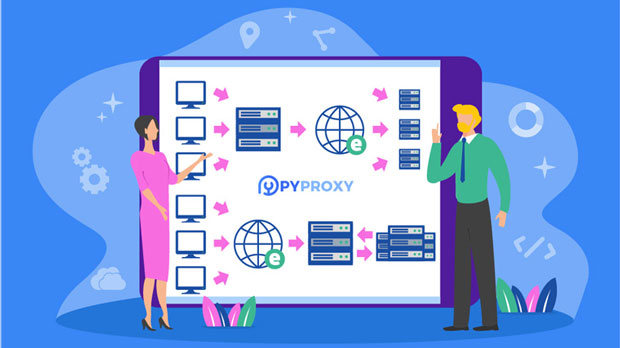Free web proxies are widely used by individuals and organizations looking for a simple and cost-effective way to browse the internet securely, hide their IP address, or access restricted content. However, one of the most significant challenges associated with free web proxies is bandwidth limitations. These limitations can severely impact the quality of the browsing experience, especially when users are trying to stream media, download large files, or engage in high-demand online activities. In this article, we will explore the various bandwidth restrictions that free web proxies impose, the causes behind these limitations, and the methods to mitigate their effects, ensuring users can still enjoy seamless internet access. Understanding Bandwidth Limitations in Free Web ProxiesBandwidth refers to the amount of data that can be transmitted over a network within a specific period. For free web proxies, bandwidth limitations are often put in place to prevent network congestion and ensure fair usage among a large number of users. When users access a free proxy service, they are typically sharing the available bandwidth with other users, meaning the more people use the service, the lower the bandwidth available for each individual.These limitations can manifest in various ways, such as slow page loading times, buffering during video streaming, and reduced download speeds. In some cases, users may experience complete unavailability of the proxy service due to excessive traffic, especially during peak usage hours.Causes of Bandwidth Limitations in Free Web ProxiesSeveral factors contribute to the bandwidth restrictions faced by users of free web proxies. These include:1. Server Resource Allocation: Free web proxy services are typically hosted on shared servers. To keep costs low, providers often allocate limited resources (such as bandwidth and server capacity) to each user. Since these resources are shared, heavy usage by one user can affect the performance for others.2. Cost of Maintenance: Free proxy services are often funded by advertising, donations, or limited premium subscriptions. This means they may not have the budget to invest in high-capacity servers or scalable infrastructure. As a result, bandwidth is intentionally restricted to keep operational costs low.3. Traffic Management: To prevent abuse and maintain service stability, providers may enforce bandwidth limits on free users. Without proper traffic management, the proxy service could become overwhelmed, leading to server crashes or poor performance.4. Overcrowding: Free proxies are often popular, meaning there are many users accessing the same servers. This high demand can quickly saturate the available bandwidth, resulting in slower speeds for everyone.Impact of Bandwidth Restrictions on UsersThe impact of bandwidth limitations can be frustrating, particularly for users who rely on web proxies for privacy, security, or accessing region-locked content. Some of the most common problems include:1. Slow Browsing Speed: When bandwidth is limited, web pages may take longer to load. This can lead to a poor browsing experience, especially for websites with heavy content, such as multimedia elements.2. Buffering and Interruptions: Streaming media, including videos and live content, may experience buffering or interruptions when the available bandwidth is insufficient to handle the data transfer.3. Unreliable Downloads: Bandwidth throttling can result in extremely slow download speeds, making it difficult to download large files or software updates.4. Service Unavailability: In some cases, free proxy services may be entirely unavailable during peak hours or when the servers are overwhelmed, leaving users without access to the internet through the proxy.Mitigation Strategies to Overcome Bandwidth LimitationsAlthough bandwidth limitations can be challenging, there are several strategies that users can implement to minimize their impact and improve their browsing experience.1. Choose Low-Traffic Proxy ServersSelecting a proxy server with fewer users can help mitigate bandwidth limitations. Free proxy services often offer multiple server locations, so choosing a server with lower demand or one that is geographically closer to the user can reduce latency and improve connection speeds.2. Limit the Use of High-Bandwidth ActivitiesUsers can avoid running bandwidth-heavy activities, such as streaming videos in high definition or downloading large files, while using a free proxy. Instead, focus on less resource-intensive tasks, such as browsing websites, sending emails, or accessing text-based content.3. Use Compression ToolsCompression tools can reduce the amount of data being transmitted through the proxy, allowing for faster loading times and improved browsing speeds. Some proxy services come with built-in data compression features, but there are also third-party applications that can help compress web pages and files.4. Consider Premium Proxy ServicesWhile free web proxies are an excellent option for casual users, those who need consistent performance, faster speeds, and more bandwidth may want to consider upgrading to a premium proxy service. Premium services typically offer higher bandwidth limits, better server allocation, and faster speeds. In some cases, they may also provide additional security features, such as encryption and advanced privacy protection.5. Use a VPN with a ProxyCombining a web proxy with a virtual private network (VPN) can help bypass some of the limitations associated with free proxies. VPNs can improve security and privacy while also allowing users to bypass bandwidth throttling by encrypting their internet traffic. Many VPN services also offer high-bandwidth options that can enhance the overall user experience.6. Optimize Browser SettingsUsers can tweak their browser settings to reduce data usage while using a free proxy. For instance, disabling automatic media loading (such as images and videos) or using a text-only browser can significantly reduce the amount of bandwidth required for browsing.7. Switch to a Different Proxy ServiceIf a particular free proxy service is consistently slow or unreliable due to bandwidth limitations, switching to a different provider can offer relief. Testing several proxy services will help users find one that meets their needs for speed and reliability.While free web proxies offer a convenient and cost-effective way to browse the internet securely and anonymously, they often come with significant bandwidth limitations that can impact the user experience. Understanding the causes behind these restrictions and implementing the appropriate strategies can help users mitigate their effects and enjoy a smoother, more reliable browsing experience. Whether it’s by choosing less crowded servers, avoiding bandwidth-heavy activities, or upgrading to a premium proxy service, users have multiple options for managing their bandwidth effectively. By adopting these strategies, users can continue to leverage the benefits of free proxies without being hindered by slow speeds and unreliable service.
Jun 09, 2025
![arrow]()



















































